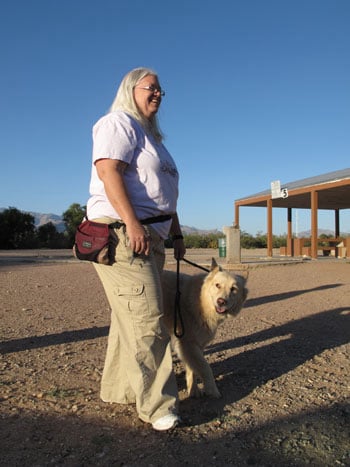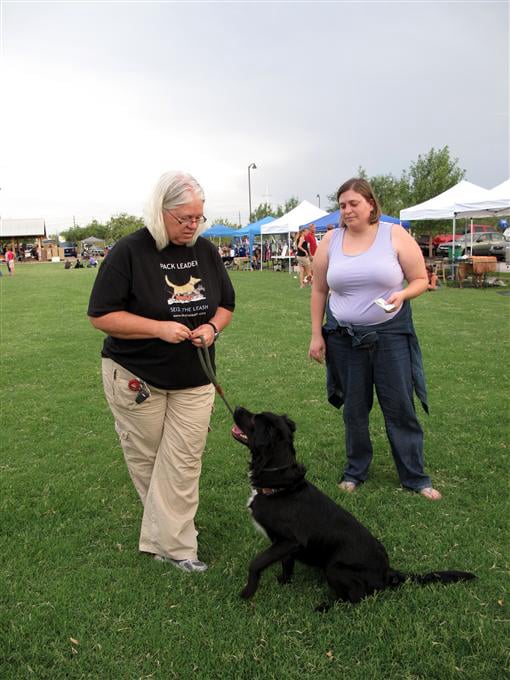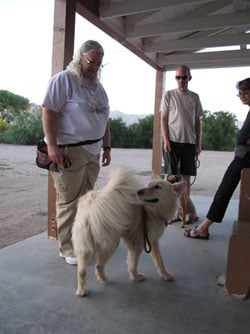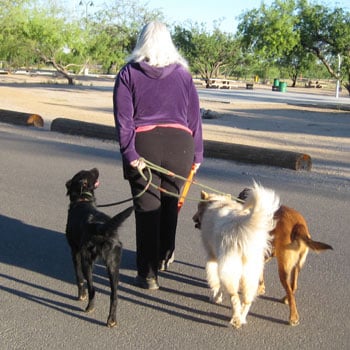I have a long history in this life with dogs. The first one I remember having any interaction with as a pet is a Beagle named Coco. She was my dad’s dog and wasn’t around very long, but she made an impression on me.
My dad loved to hunt. According to my mom, he was hunting the day I was born. Apparently he had filled out the birth certificate already and then left to hunt ducks. My name, James Harold Robinson Jr.
That isn’t my name now of course, I’m female. But my initials are still the same as what he wanted. Jamie Helen Robinson. My mom had to completely change the birth certificate of course, but the idea of my being my dad’s “son” with the same name stuck. To this day, I am not a “female” to the extent of makeup, smelly stuff, dresses and high heels. I much prefer sneakers, jeans, t-shirts and the wind in my hair.
Although I don’t remember this, the stories are that my dad trained Beagles for his hunting buddies. Coco was the last of those Beagles but the first dog I had any training interaction with, and I think, the first dog my dad ever failed at.
I didn’t notice Coco much; she wasn’t any different than the other Beagles that came and went. My mom had cats and those are what I mostly remember of my early years. What stands out, and has been influential in my life with dogs, was one day when my dad was doing some training with Coco.
It started in the house. He was doing heeling exercises with Coco through the living room, kitchen and dining room. No leash. Then he headed through the sliding glass door to the back yard. Coco didn’t want to go out the sliding glass door so my dad, being old school, smacked Coco who then lunged out the door. What followed was a comedy of errors which included my dad racing around the back yard swearing and cussing and throwing things at Coco. She finally did sit, but she was gone the next day and I never knew what actually happened to her. But I resolved at that time never to "train" the way my dad did.
For most of the 50+ years I’ve been working with dogs (and other animals), it was a part time gig. Before the turn of the century, most trainers were sport dog or guard dog trainers, other than those who trained for specialty jobs like herding, hunting, retrieving, etc. Pet dogs rarely met with a trainer.
In 2004 I moved to Arizona and things changed. Programming computers was getting stale, and I needed a change. That change was to move to 70% dog training and 30% computers. A perfect switch.
Dogs have taught me many things over the years - commitment and responsibility being the biggest for me because I have a tendency to procrastinate and take the easy road and the short cuts with my life rather.
What I have learned from dogs and their owners and am still learning:
Be a dog. Live as much in the present as it's possible to do. Do not regret what you've done in the past or worry about what the future will be. You create your future by your actions of today.
Choose to be in the moment with your dog. Let go of what happened in the past and create a better future by living now. You are always at a point of choice in your life. When making your choices in your day to day life you are affecting more than just you and most importantly you are affecting your dog.
Maintain your intergrity. Don't compromise yourself because of what others think or say. You must be a person of your word. Personal integrity will carry over to each and every part of your life. You can't have it in one area and not have it in another. Part of this is that you have to know what you want and who you are. Don't let others definte you or how you live your life or interact with your dog.
Take full responsibility for your relationships. Responsibility is not blame, it's the willingness to be the one in control of any situation or relationship and understand that control does not mean actually making others move.
Building a solid relationship with your dog is a must. If you have a good solid relationship with your dog, she will want to be where you are, doing what you do, constantly checking in with you to see what's new and exciting. She will not seek out other people, or other dogs to interact with. Your dog will be all about you, and what you get to do together.
Commit. Keep your commitments, re-examine the commitments that you didn’t really want to make and recommit to what is acceptable. Make sure that what you are doing is what you really want to do. Be happy with your decisions.
Be aware of your emotions. Be aware of your thoughts when interacting with your dog. Frustration is one of the worst emotions to bring to training. If you are feeling frustrated, it's a short hop to hanging your dog by the neck via it's leash and collar or heading to the pet store and buying a shock collar. Your thoughts can uplift you, yet they can also create sadness, fear, anger, etc. Learning to be aware of your thoughts and how they create your reality is a necessary tool when training your dog.
Express how you feel. User a variety of communicative methods to show others and your dog your real thoughts and feelings. Give yourself full permission to feel what you are feeling and be willing to share that. Love your dog through the way you teach him
Move. Dance, leap, fly, swim, do something. Don't stagnate, be fluid and creative. Movement is change and without change there is nothing. You have to have change and movement to be creative and to formulate ideas. A stiff body is much harder to create solutions from. Dogs rarely stop moving unless they are resting.
Learn how to communicate. Any method of training should be taken from a dogs point of view, and use the natural forms of communication that most dogs learn as puppies. It really doesn't matter what you want your dog to learn. If YOU learn to communicate to her in a language that she understands and if you learn how to set things up so she can figure things out for herself, teaching becomes very simple.
Be a true leader. Leadership is about trust and respect; it's not about overpowering or dominating a dog physically. It's about letting him be a dog and doing dog things, but shaping the context in which he does them. People and dogs want to be led and they want a leader who will keep them on track. If you ask me it is a sort of survival instinct. People may grumble because you may force them out of their comfort zone but they will follow you. Your personal integrity will show up in every aspect of your life.
Know your stories. It can be beneficial to know the stories that you have in your subconscious mind. Realize that they are the past and commit to being fully within yourself in the present moment. You are you and you are not your stories.




